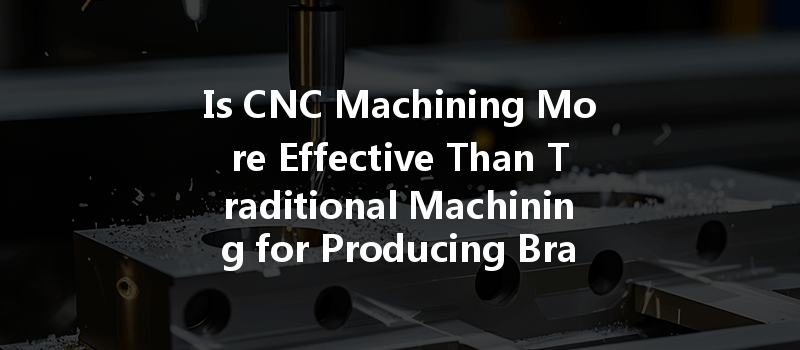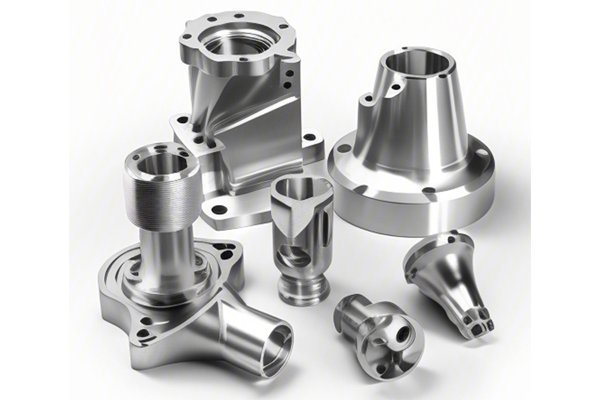Did you know that the global CNC machining market is expected to reach over $100 billion by 2026? As industries push for efficiency and precision, the question of whether CNC (Computer Numerical Control) machining is more effective than traditional machining methods becomes increasingly significant. Particularly in the production of brass parts, understanding the differences between these machining methods can help manufacturers make informed decisions that impact product quality, lead times, and overall costs.
In this blog, we will delve deep into the world of CNC machining versus traditional machining, exploring their benefits and limitations in producing brass parts and providing you with detailed insights for optimizing your production processes.
The Basics of CNC Machining and Traditional Machining
Before we dive into the comparison, let’s clarify what CNC machining and traditional machining entail:
Section 1: Understanding Brass Parts and Their Applications
Brass, an alloy made primarily of copper and zinc, is widely used in various applications thanks to its excellent machinability, corrosion resistance, and aesthetic appeal. Common uses of brass parts include:
Understanding these applications helps us appreciate the importance of precision and quality in the manufacturing processes for brass parts.
Section 2: The Advantages of CNC Machining in Producing Brass Parts
CNC machining boasts a precision rate within ±0.005 mm. Its computer-controlled operations ensure that parts are produced to exact specifications, minimizing waste and rework costs.
CNC machines can operate continuously without fatigue, often completing tasks much faster than traditional methods that rely on human labor. This improves turnaround times and allows for higher production volumes.
CNC machining can produce intricate designs that would be extremely challenging or impossible using traditional methods. With software-controlled parameters, manufacturers can program the machine to handle complex geometries seamlessly.
Manufacturing with CNC technology ensures uniformity in every batch. Each brass part produced will maintain the same quality standards, an essential factor for industries where component interchangeability is critical.
Automation leads to fewer labor hours required for production, freeing up workers for more value-added activities. This cost efficiency can significantly impact the overall manufacturing budget.
Section 3: Limitations of CNC Machining
While CNC machining presents numerous advantages, it’s also essential to recognize its limitations:
CNC machines can be expensive to purchase and set up. This initial investment might deter smaller companies or those with low production needs.
Operating CNC machines requires skilled personnel who understand both machining principles and programming. Training employees can incur additional costs.
CNC machining relies on sophisticated software, which can present challenges if the software is not user-friendly or if bugs arise, potentially causing downtime.
Section 4: The Benefits of Traditional Machining for Brass Parts

For small-scale operations, traditional machining often has lower upfront equipment costs compared to CNC setups.
Experienced machinists can make quick adjustments on the fly for custom orders. Traditional machines can be easily modified for unique applications without needing complex software changes.
For simpler parts, traditional machining processes can be straightforward and effective, especially for companies with skilled labor readily available.
Section 5: The Downsides of Traditional Machining
The manual nature of traditional machining increases the likelihood of human error, leading to inconsistencies and defects in parts.
Each part must be set up and monitored by a machinist, making processes slower and less efficient than CNC machining.
The quality of output is heavily reliant on the skill level of the operator, which can vary greatly among individuals.
Section 6: Comparing Costs: CNC vs. Traditional Machining for Brass Parts
To assess which method is more effective for brass parts, we must consider the total cost:
Section 7: Case Studies and Real-World Applications
Case Study 1: Automotive Industry
The automotive industry frequently utilizes CNC machining for producing brass components like connectors and fittings. A leading automotive supplier adopted CNC machining for its precision and speed, reducing part production time by 50%. This resulted in improved supply chain efficiency and meeting client demands for faster turnaround times.
Case Study 2: Plumbing Industry
Conversely, a smaller plumbing company opted for traditional machining due to low production volumes and the ability to make quick modifications on the fly for custom jobs. While they succeeded in terms of flexibility, they struggled with consistency, often needing scrap parts due to operator error.
Section 8: Making the Right Choice
Ultimately, the effectiveness of CNC machining versus traditional machining in producing brass parts depends on several factors:
In the debate of whether CNC machining is more effective than traditional machining for producing brass parts, the answer largely depends on specific business needs and conditions. CNC machining offers precise, efficient, and consistent production that fits high-volume demands and complex designs. Conversely, traditional machining provides flexibility and lower startup costs that can be attractive for smaller, more customized operations.
Understanding the strengths and weaknesses of each method can empower manufacturers to make informed decisions that align with their production goals, market demands, and budget constraints. As technology continues to evolve, keeping abreast of the latest developments in machining will remain crucial for any business aiming to thrive in a competitive landscape.
As you consider your machining options, reflect on the strategies discussed here. The choice between CNC and traditional machining can significantly impact your production outcomes, quality standards, and overall operational efficiency. We encourage you to assess your specific needs and remember the importance of informed decision-making in achieving success in your manufacturing endeavors.
Related Posts
- What are the advantages of the anodizing process for enhancing CNC machined parts’ durability and appearance?
- What is the difference in corrosion resistance between 316 stainless steel and 2205 stainless steel for CNC turning?
- How does CNC machining generate noise and dust, and what methods can control these issues effectively?






